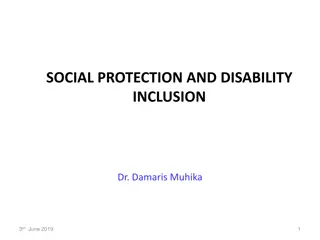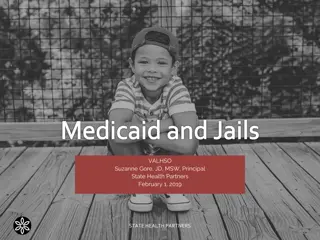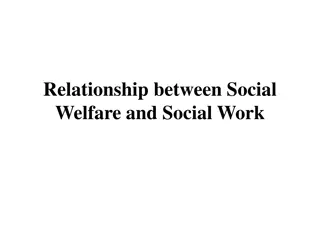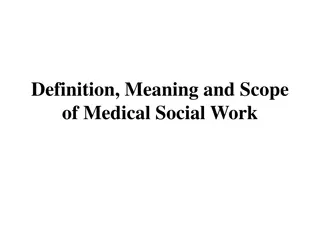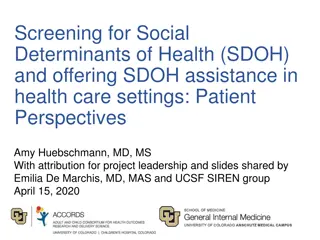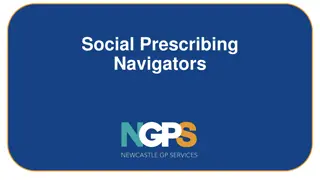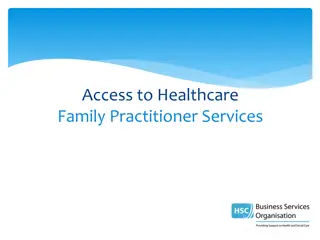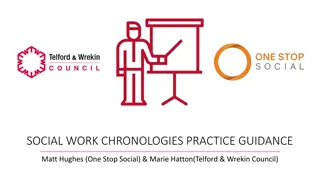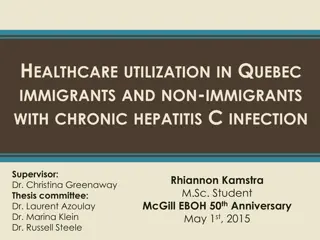Understanding Social Risks and Needs in Healthcare Context
Social risks, also known as social determinants of health, significantly impact health outcomes. This presentation highlights the importance of collecting social risk data, screening patients, and conducting social needs referrals to enhance patient care, address unmet social needs, and improve overall health outcomes in healthcare settings.
Download Presentation

Please find below an Image/Link to download the presentation.
The content on the website is provided AS IS for your information and personal use only. It may not be sold, licensed, or shared on other websites without obtaining consent from the author. Download presentation by click this link. If you encounter any issues during the download, it is possible that the publisher has removed the file from their server.
E N D
Presentation Transcript
Social Needs Referral Kick-Off / Staff Orientation [Clinic Name] [Date]
What are Social Risks (also called Social Determinants of Health)? Social risks are the conditions in which people live and work. They profoundly impact health risks and outcomes, and ability to act on care recommendations. Only 10-20% of health outcomes are attributed to clinical care; social risks account for 60-80% of health outcomes. Social risks that impact health include: Housing stability Food security Access to transportation and childcare Ability to pay for basic utilities And more Tarlov, A.R., Public Policy Frameworks for Improving Population Health. Annals of the New York Academy of Sciences, 1999. 896(SOCIOECONOMIC STATUS AND HEALTH IN INDUSTRIAL NATIONS: SOCIAL, PSYCHOLOGICAL, AND BIOLOGICAL PATHWAYS): p. 281-293.
Social Risks Social risks that you may be able to document in the EHR include: Household income Education Housing status Food security Social connection / isolation
Why Collect Social Risk Data? Understand the factors affecting our patients health Adapt treatment and care planning as needed Identify needed referrals to community social services Enable targeted outreach Demonstrate areas of need for resourcing and advocacy
Our Clinics Social Risk Screening Goals Instructions: fill-in the blanks prior to presenting this slide and delete any unneeded text Our clinic will screen the following types of patients for social risks: [Insert types of social risks here] We will screen for the following social risks: [Insert types of social risks here] We will screen them every [insert how often] Screening will take place: [Insert how/when in workflows and who will conduct screening] We will use social risk data for: [Insert what you will use social risk data for]
Why Conduct Social Needs Referrals? Address patients desire for support with unmet social needs Improve care quality and clinical outcomes Reduce cost of care Enhance relationships with community partners Demonstrate areas of need for resourcing and advocacy
Social Needs Referral Activities Will Include: Choose relevant services Utilize navigation support strategies Document, track, and followup on referrals Recognize best practices and lessons learned Evaluate and iterate our clinic s referral goals and processes Sustain social needs referral-making (e.g., systematic training, regional visibility)
Our Clinics Social Needs Referral Goals Instructions: fill-in the blanks prior to presenting this slide and delete any unneeded text We will conduct social needs referrals for the following social risks: [Insert types of social risks here] We will conduct referrals every [insert how often] Social needs referrals will take place [insert when in workflows] and by [insert who will conduct referrals] We will use social needs referral data for: [Insert what you will use social needs data for]
To Track Our Clinic Goals: We can use the Goals Thermometer
Promote Social Risk Screening and Referral Activities: Placing patient-facing social risk posters around the clinic Recognizing staff who complete social risk screens and provide referrals Tracking our clinic goals
Discussion What are potential barriers to conducting social risk screening and referrals at our clinic? Examples: Lack of staff time Concerns about asking sensitive social risk related questions Limited ability to act on patients identified social needs








